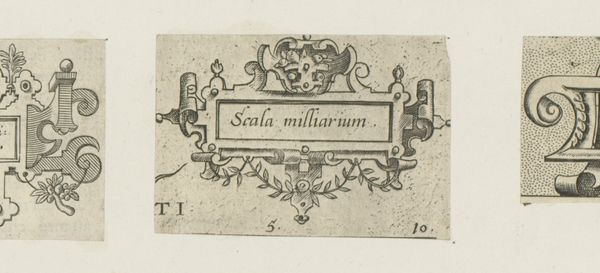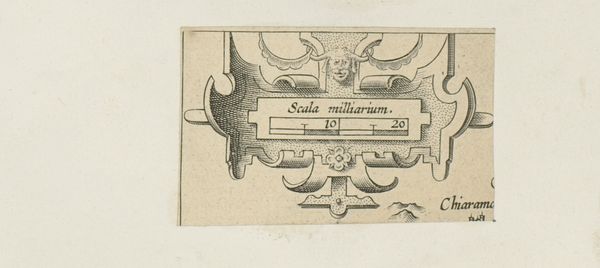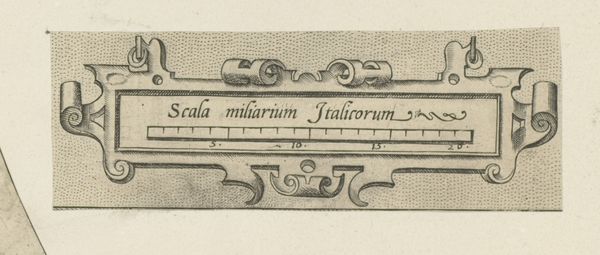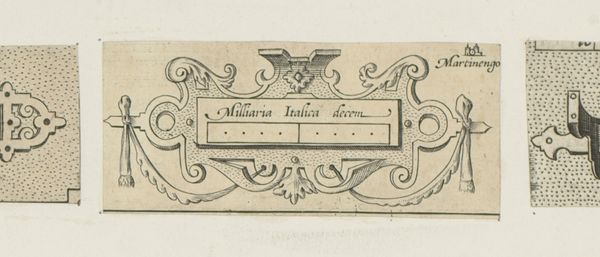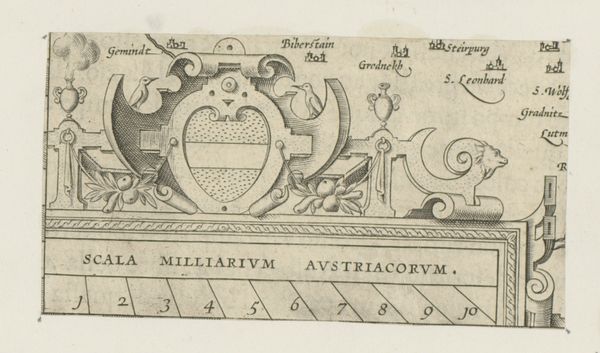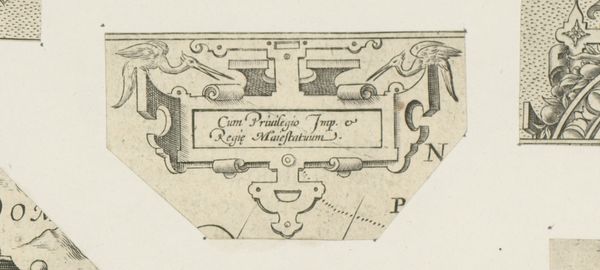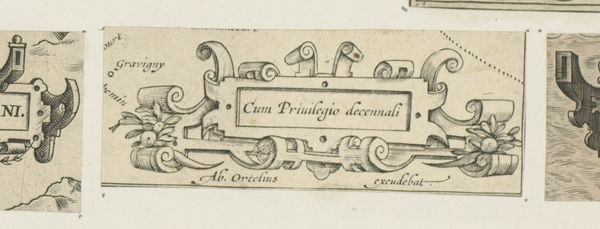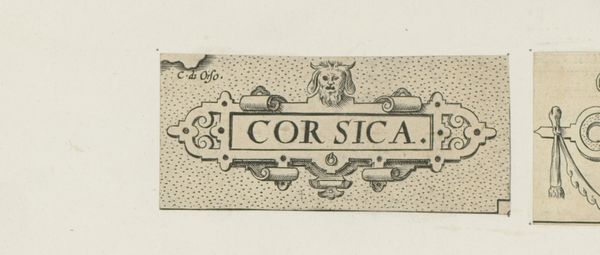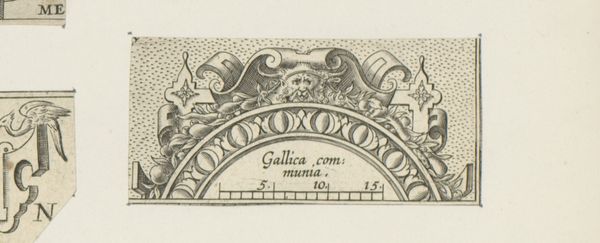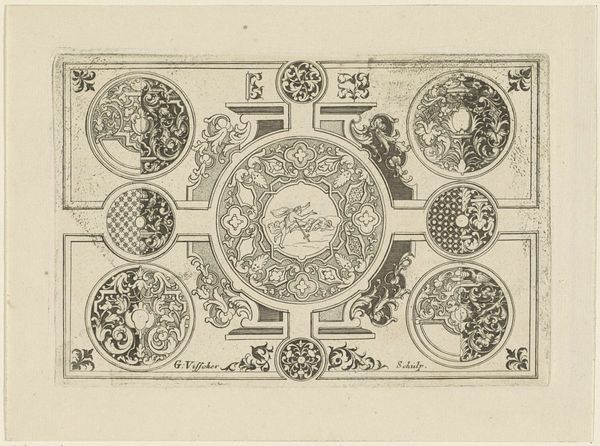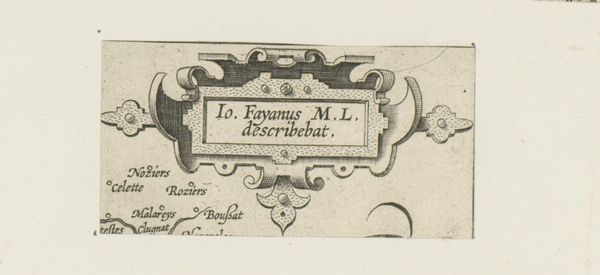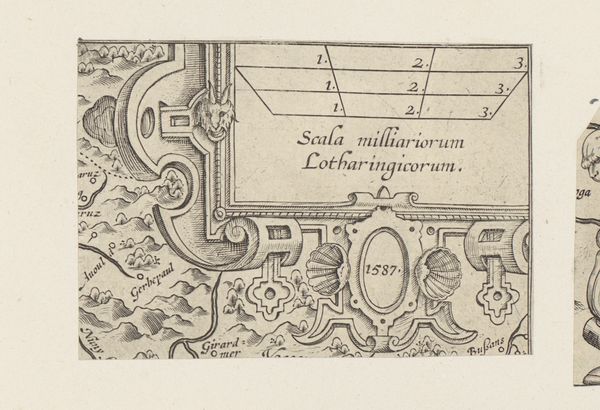
graphic-art, print, engraving
#
graphic-art
# print
#
pen sketch
#
11_renaissance
#
geometric
#
line
#
engraving
Dimensions: height 36 mm, width 81 mm
Copyright: Rijks Museum: Open Domain
Curator: Let's discuss this engraving, "Cartouche met schelpornament," which translates to "Cartouche with shell ornament," created circa 1572-1575 by an anonymous artist. It's a fascinating example of Renaissance graphic art. Editor: My first impression is that it’s meticulously detailed. There's an impressive precision and intricacy within such a small, contained space. It almost feels like looking at a piece of ornate jewelry or some delicate embellishment. Curator: Precisely. The dense stippling in the background creates a tactile contrast with the crisp lines of the cartouche itself. The balanced composition also lends to this work a serene classicism. The structural elements are pronounced, the curves of the shell balanced against the rigid angles of the frame. Editor: I see the shell not merely as ornamentation but as a layered emblem of pilgrimage and perhaps rebirth, concepts interwoven in Renaissance symbolism. What could this term in the frame, "Miliaria Scotica," signify in relation to that symbolism? Curator: It's likely a reference to Scottish miles, perhaps indicating the cartouche's function as a marker or label within a larger map or document. Notice how the structure, its frame-within-a-frame, serves to literally and figuratively contain and present the text as the object of our attention. Editor: The geometric rigidity is undeniable. It directs my eye, compelling me to acknowledge it as both a unit of measure and a proclamation of national identity. It strikes me that the choice of shell, then, creates a sense of both the familiar and the distant, the local and the far-reaching. Curator: An astute reading. The balance of linear precision against the organic flourish exemplifies Renaissance aesthetics. The visual interplay allows us to interpret a sense of proportion and structure. It represents a harmonious union of elements. Editor: Examining it, I realize this engraving offers more than mere decorative design. It uses these Renaissance elements to convey historical and cartographic significance. The shell provides a visual connection to journeys and distances. Curator: Agreed. Its refined structure and visual clarity give testament to the enduring fascination with symbolic meaning in the early modern era. It elegantly achieves its purpose. Editor: And viewed from that perspective, it serves as a beautiful reminder of how images can hold so many complex cultural meanings within their frames.
Comments
No comments
Be the first to comment and join the conversation on the ultimate creative platform.
